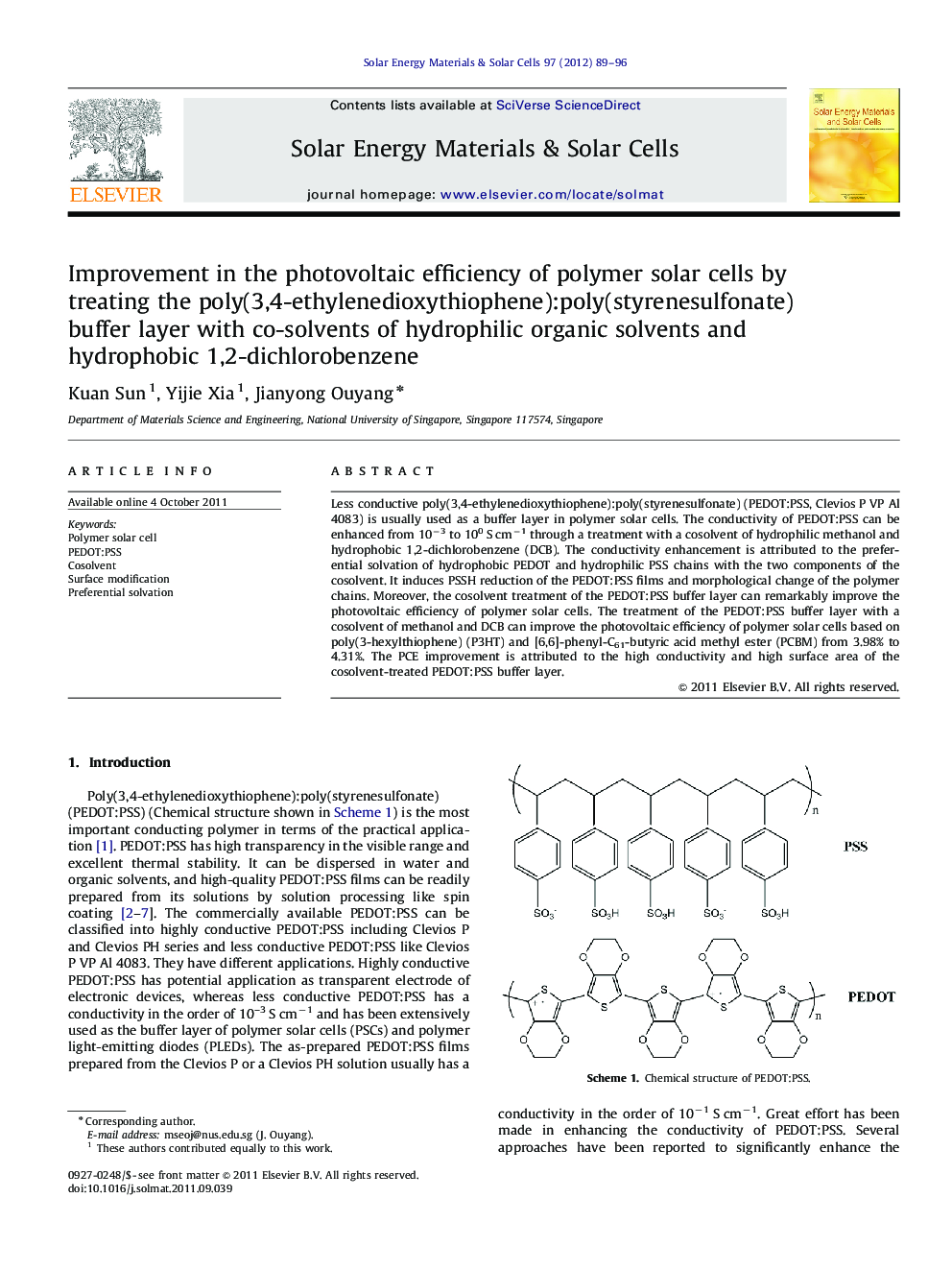| Article ID | Journal | Published Year | Pages | File Type |
|---|---|---|---|---|
| 78651 | Solar Energy Materials and Solar Cells | 2012 | 8 Pages |
Less conductive poly(3,4-ethylenedioxythiophene):poly(styrenesulfonate) (PEDOT:PSS, Clevios P VP Al 4083) is usually used as a buffer layer in polymer solar cells. The conductivity of PEDOT:PSS can be enhanced from 10−3 to 100 S cm−1 through a treatment with a cosolvent of hydrophilic methanol and hydrophobic 1,2-dichlorobenzene (DCB). The conductivity enhancement is attributed to the preferential solvation of hydrophobic PEDOT and hydrophilic PSS chains with the two components of the cosolvent. It induces PSSH reduction of the PEDOT:PSS films and morphological change of the polymer chains. Moreover, the cosolvent treatment of the PEDOT:PSS buffer layer can remarkably improve the photovoltaic efficiency of polymer solar cells. The treatment of the PEDOT:PSS buffer layer with a cosolvent of methanol and DCB can improve the photovoltaic efficiency of polymer solar cells based on poly(3-hexylthiophene) (P3HT) and [6,6]-phenyl-C61-butyric acid methyl ester (PCBM) from 3.98% to 4.31%. The PCE improvement is attributed to the high conductivity and high surface area of the cosolvent-treated PEDOT:PSS buffer layer.
Graphical AbstractFigure optionsDownload full-size imageDownload as PowerPoint slideHighlights► Less conductive PEDOT:PSS films were treated with cosolvents. ► The cosolvents consist of hydrophilic methanol and hydrophobic DCB. ► The cosolvent treatment significantly enhances the conductivity of PEDOT:PSS. ► The cosolvent treatment of PEDOT:PSS improves the photovoltaic efficiency of polymer solar cells.
